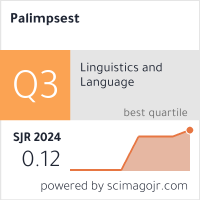ATTITUDES OF BUSINESS UNDERGRADUATES TOWARDS ENGLISH-MEDIUM INSTRUCTION FOR THEIR ACADEMIC AND PROFESSIONAL CAREER ASPIRATIONS: A CASE STUDY
DOI:
https://doi.org/10.46763/PALIM251019181sAbstract
English is not only the official language of Pakistan but also the medium of instruction in higher education. Although English is often the third or fourth language for a student in Pakistan, key stakeholders have positive attitudes towards English-medium instruction. The present study was conducted to explore the attitudes of business undergraduates towards English-medium instruction for their academic and professional career aspirations. Guided by the Interpretivism research paradigm, qualitative approach was used for collection and analysis. Nineteen business students were purposively sampled from an undergraduate writing course and open-ended questionnaires were used to collect data from them. Thematic analysis technique was used to analyze the data from the written responses of the participants. The findings revealed that participants view EMI favourably because they believe it helps them to achieve both academic and professional career goals. The participants believed that they improved their chances of enrolling in universities abroad by improving their language and analytical skills, increasing their self-confidence in the classroom and excelling in extracurricular activities. Thus, EMI may help them advance in their academic careers. The research participants also considered EMI as a way to penetrate the global employment market, showcase their abilities, and leave a lasting impression on the employers. Despite offering valuable insights into Pakistani students' attitudes toward EMI, the current study's findings are not generalizable. Future studies should strive for larger samples and extensive nationwide surveys which will assist scholars in creating a comprehensive account of undergraduates' attitudes of EMI. The findings of this study has implications for students, teachers, university administrations, and policymakers.
Keywords: Attitudes; Undergraduates; English-medium Instruction; Academic Career; Professional Career.


